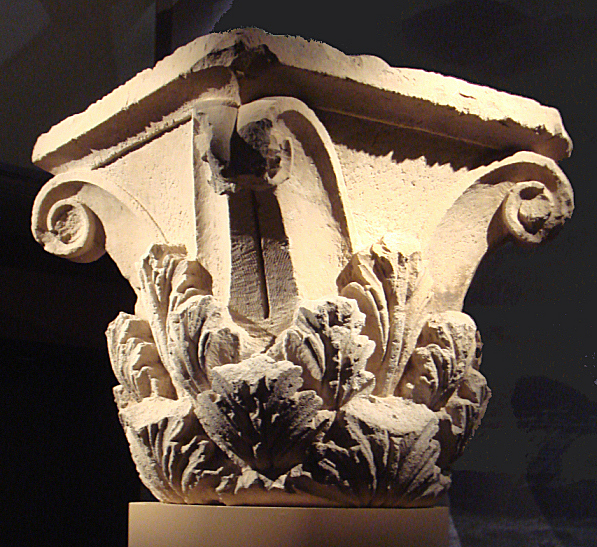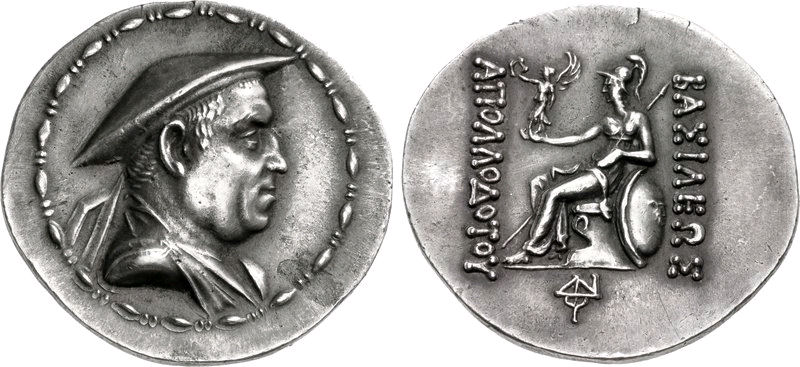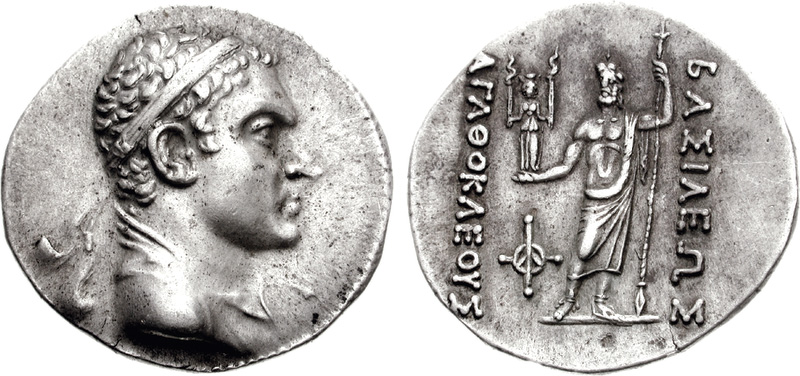|
Antimachus I
Anthimachus I Theos (Greek: ; known as Antimakha in Indian sources) was believed to have been an illegitimate son of Euthydemus, and one of the Greco-Bactrian kings, generally dated from around 185 BC to 170 BC. Rule William Woodthorpe Tarn and numismatist Robert Senior place Antimachus as a member of the Euthydemid dynasty and probably as a son of Euthydemus and brother of Demetrius. Other historians, like A.K. Narain, mark him as independent of Euthydemid authority, and probably a scion of some relation to the Diodotid dynasty. He was king of an area covering parts of Bactria and probably also Arachosia in southern Afghanistan (see "Coins of Antimachus I," below). Antimachus I was either defeated during his resistance to the usurper Eucratides, or his main territory was absorbed by the latter upon his death. Apparently adding to the argument against direct Euthydemid familial connections is a unique tax-receipt that states: That Antimachus would list his own associa ... [...More Info...] [...Related Items...] OR: [Wikipedia] [Google] [Baidu] |
Indo-Greek
The Indo-Greek Kingdom, or Graeco-Indian Kingdom, also known historically as the Yavana Kingdom (Yavanarajya), was a Hellenistic-era Greek kingdom covering various parts of Afghanistan and the northwestern regions of the Indian subcontinent (parts of modern-day Pakistan and northwestern India). This kingdom was in existence from ca. 200 BC to ca. 1 BC. During its existence the kingdom was ruled over by 30 successive kings. Menander I, being the most well known amongst the Indo-Greek kings, is often referred to simply as ''“Menander,”'' despite the fact that there was indeed another Indo-Greek King known as Menander II. Menander I's capital was at Sagala in the Punjab (present-day Sialkot). The kingdom was founded when the Graeco-Bactrian king Demetrius (and later Eucratides) invaded India from Bactria in 200 BC. The Greeks in the Indian Subcontinent were eventually divided from the Graeco-Bactrians centered on Bactria (now the border between Afghanistan and Uzbe ... [...More Info...] [...Related Items...] OR: [Wikipedia] [Google] [Baidu] |
Year Of Birth Unknown
A year or annus is the orbital period of a planetary body, for example, the Earth, moving in its orbit around the Sun. Due to the Earth's axial tilt, the course of a year sees the passing of the seasons, marked by change in weather, the hours of daylight, and, consequently, vegetation and soil fertility. In temperate and subpolar climate, subpolar regions around the planet, four seasons are generally recognized: spring (season), spring, summer, autumn and winter. In tropics, tropical and subtropics, subtropical regions, several geographical sectors do not present defined seasons; but in the tropics#Seasons and climate, seasonal tropics, the annual wet season, wet and dry seasons are recognized and tracked. A calendar year is an approximation of the number of days of the Earth's orbital period, as counted in a given calendar. The Gregorian calendar, or modern calendar, presents its calendar year to be either a common year of 365 days or a leap year of 366 days, as do t ... [...More Info...] [...Related Items...] OR: [Wikipedia] [Google] [Baidu] |
Year Of Death Unknown
A year or annus is the orbital period of a planetary body, for example, the Earth, moving in its orbit around the Sun. Due to the Earth's axial tilt, the course of a year sees the passing of the seasons, marked by change in weather, the hours of daylight, and, consequently, vegetation and soil fertility. In temperate and subpolar regions around the planet, four seasons are generally recognized: spring, summer, autumn and winter. In tropical and subtropical regions, several geographical sectors do not present defined seasons; but in the seasonal tropics, the annual wet and dry seasons are recognized and tracked. A calendar year is an approximation of the number of days of the Earth's orbital period, as counted in a given calendar. The Gregorian calendar, or modern calendar, presents its calendar year to be either a common year of 365 days or a leap year of 366 days, as do the Julian calendars. For the Gregorian calendar, the average length of the calendar year ... [...More Info...] [...Related Items...] OR: [Wikipedia] [Google] [Baidu] |
Greco-Bactrian Kings
The Bactrian Kingdom, known to historians as the Greco-Bactrian Kingdom or simply Greco-Bactria, was a Hellenistic-era Greek state, and along with the Indo-Greek Kingdom, the easternmost part of the Hellenistic world in Central Asia and the Indian Subcontinent from its founding in 256 BC by Diodotus I Soter to its fall BC under the reign of Heliocles I. It covered much of present-day Afghanistan, Uzbekistan, Tajikistan and Turkmenistan, and at its zenith, parts of Iran and Pakistan. An extension further east with military campaigns may have reached central Gansu province in China. Bactria was ruled by the Diodotid dynasty and rival Euthydemid dynasty. The capitals of Ai-Khanum and Bactra were among the largest and richest of antiquity - Bactria itself was known as the ‘''land of a thousand golden cities’''. The Indo-Greek Kingdoms, as Bactrian successor states, would last until 10 AD. History Independence and Diodotid dynasty Diodotus, the satrap of Bactria (and probably ... [...More Info...] [...Related Items...] OR: [Wikipedia] [Google] [Baidu] |
Pantaleon
Pantaleon, also known as Panteleimon, (Greek: ) was a Greek king who reigned some time between 190–180 BC in Bactria and India. He was a younger contemporary or successor of the Greco-Bactrian king Demetrius, and is sometimes believed to have been his brother and/or subking. The scarcity of his coinage indicates a short reign. Known evidence suggests that he was replaced by his (probable) brother or son Agathocles, by whom he was commemorated on a "pedigree" coin. Copper-Nickel coinage Some of his coins (as well as those of Agathocles and Euthydemus II) have another surprising characteristic: they are made of copper-nickel alloy, a technology that would not be developed in the West until the 18th century, but was known by the Chinese at the time. This suggests that exchanges of the metallic alloy or technicians happened between China and the region of Bactria. Bilingual Indian-standard coinage He was the first Greek king to strike Indian coins, peculiar irregular bronzes ... [...More Info...] [...Related Items...] OR: [Wikipedia] [Google] [Baidu] |
Greco-Bactrian Kingdom
The Bactrian Kingdom, known to historians as the Greco-Bactrian Kingdom or simply Greco-Bactria, was a Hellenistic-era Greek state, and along with the Indo-Greek Kingdom, the easternmost part of the Hellenistic world in Central Asia and the Indian Subcontinent from its founding in 256 BC by Diodotus I Soter to its fall BC under the reign of Heliocles I. It covered much of present-day Afghanistan, Uzbekistan, Tajikistan and Turkmenistan, and at its zenith, parts of Iran and Pakistan. An extension further east with military campaigns may have reached central Gansu province in China. Bactria was ruled by the Diodotid dynasty and rival Euthydemid dynasty. The capitals of Ai-Khanum and Bactra were among the largest and richest of antiquity - Bactria itself was known as the ‘''land of a thousand golden cities’''. The Indo-Greek Kingdoms, as Bactrian successor states, would last until 10 AD. History Independence and Diodotid dynasty Diodotus, the satrap of Bactria (and pro ... [...More Info...] [...Related Items...] OR: [Wikipedia] [Google] [Baidu] |
Euthydemus II
Euthydemus II (Greek: ) was a Greco-Bactrian king who ruled in Bactria in 185-180 BCE. Rule Son of Demetrius I of Bactria, Euthydemus II became king in the 180s BCE, either after his father's death or as a sub-king to him. The style and rare nickel alloys of his coins associates him closely in time with the king Agathocles but their precise relation remains uncertain. Euthydemus is pictured as a boy on his coins and most likely died very young. He was the last Euthydemid ruler of the Greco-Bactrian Kingdom and perhaps related with king Xiutu of Gansu.Lucas, Christopoulos; Dionysian rituals and the Golden Zeus of China pp. http://www.sino-platonic.org/complete/spp326_dionysian_rituals_china.pdf pp.68-112 Coinage File:Dinastia indo-battriana, tetradracma di euthydemos II, 190-185 ac ca.JPG, Portrait of young Euthydemus II. Image:EuthydemusIICoin.jpg, Silver coin of King Euthydemus II. With Greek legend ΒΑΣΙΛΕΩΣ ΕΥΘΥΔΗΜΟΥ, "Of King Euthydemus". File:Euthydemos I ... [...More Info...] [...Related Items...] OR: [Wikipedia] [Google] [Baidu] |
Apollodotus I
Apollodotus I ( Greek: ) Prakrit in the Kharoshti script: ''maharajasa apaladatasa tratarasa'') was an Indo-Greek king between 180 BC and 160 BC or between 174 and 165 BC (first dating Osmund Bopearachchi and R. C. Senior, second dating Boperachchi) who ruled the western and southern parts of the Indo-Greek kingdom, from Taxila in Punjab to the areas of Sindh and possibly Gujarat. Ruler of the Indo-Greek kingdom Apollodotus was not the first to strike bilingual coins outside Bactria, but he was the first king who ruled in India only, and therefore the founder of the proper Indo-Greek kingdom. According to W. W. Tarn, Apollodotus I was one of the generals of Demetrius I of Bactria, the Greco-Bactrian king who invaded northwestern India after 180 BC. Tarn was uncertain whether he was a member of the royal house. It is possible he was an illegitimate son of Euthydemus, making him Demetrius’ half brother. Later authors largely agree with Tarn's analysis, though wit ... [...More Info...] [...Related Items...] OR: [Wikipedia] [Google] [Baidu] |
Nike (mythology)
In Greek mythology, Nike (; grc, Νίκη, lit=victory, ancient: , modern: ) was a goddess who personified victory in any field including art, music, war, and athletics. She is often portrayed in Greek art as Winged Victory in the motion of flight; however, she can also appear without wings as "Wingless Victory" when she is being portrayed as an attribute of another deity such as Athena.Suidas. ''The Suda on Line: Byzantine Lexicography''. Translated by Whitehead, David, et al. (2014). Accessed 9 December 2022. https://www.cs.uky.edu/~raphael/sol/sol-html/ In Greek literature Nike is described as both an attribute and attendant to the gods Zeus and Athena. Nike gained this honored role beside Zeus during the Titanomachy where she was one of the first gods to offer her allegiance to Zeus. At Athens, Nike became a servant to Athena as well as an attribute of her due to the prominent status Athena held in her patron city. The fusion of the two goddesses at Athens has contributed to ... [...More Info...] [...Related Items...] OR: [Wikipedia] [Google] [Baidu] |
Agathocles Of Bactria
Agathocles I Dicaeus ( grc, Ἀγαθοκλῆς Δικαῖος, Agathoklēs Dikaios, the epithet means "the just") was a Greco-Bactrian/ Indo-Greek king, who reigned between around 190 and 180 BC, likely of the dynasty of Diodotus I, due to his commemoration of Antiochus Nicator. Accounts and discovery There is a near-complete lack of written sources except an extensive coinage. Agathocles was first discovered by Johann Martin Honigberger in 1834, with hordes of coins being discovered at a rapid pace. No sooner had Desiré-Raoul Rochette held him to be the founder of the Bactrian dynasty than he was rejected by Christian Lassen, who felt that Agathocles was a contemporary of Demetrius and Eucratides I. Biography Agathocles' father may have been Diodotus II, and he would therefore have been illegitimate. Agathocles ruled c. 185 BC and was probably the immediate successor of Pantaleon; he was a contemporaneous relative (maybe, son) of Demetrius I, who was busy expandin ... [...More Info...] [...Related Items...] OR: [Wikipedia] [Google] [Baidu] |








